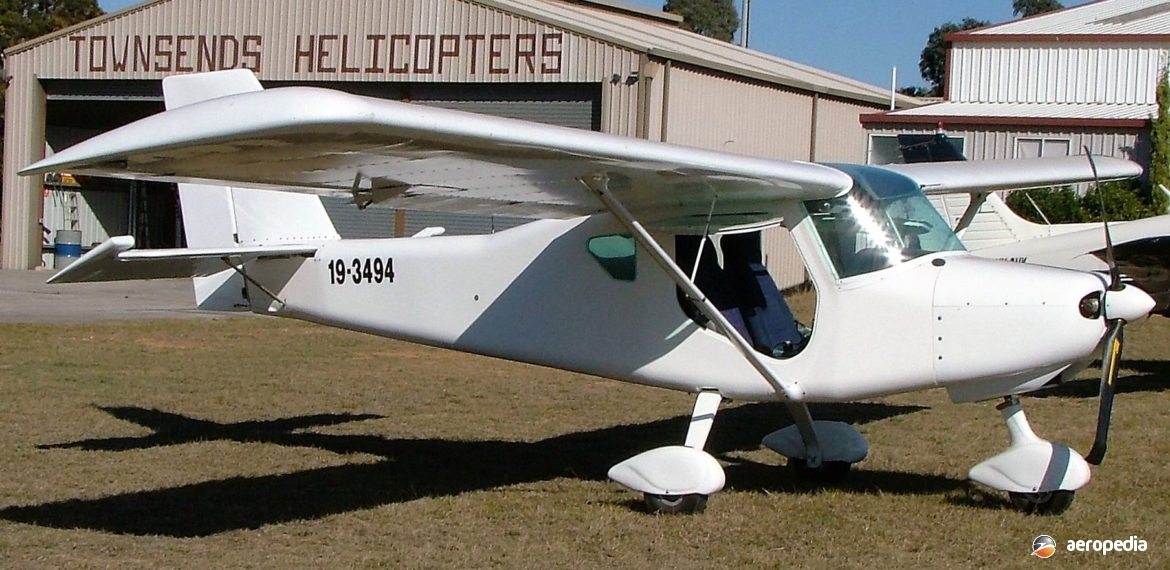Photograph:
Aerodesign Pegasus 19-3494 (c/n 4) at the now defunct Hoxton Park, NSW aerodrome (David C Eyre)
Country of origin:
Brazil
Description:
Two-seat light monoplane
Power Plant:
One 60 kw (80 hp) Rotax 912 four-cylinder, four-stroke, horizontally-opposed liquid-and-air-cooled engine
Specifications:
- Wingspan: 9.80 m (32 ft)
- Length: 5.90 m (19 ft 4 in)
- Wing area: 16.7 m² (180 sq ft)
- Max speed: 201 km/h (125 mph)
- Cruising speed at 85% power: 177 km/h (110 mph)
- Cruising speed at 75% power: 169 km/h (105 mph)
- Stalling speed with flaps and power: 55 km/h (34 mph)
- Rate of climb: 244 m/min (800 ft/min)
- Max endurance: 6 hours
- Max range: 966 km (600 miles)
- Empty weight: 300 kg (660 lb)
- Baggage capacity: 30 kg (66 lb)
- Loaded weight: 550 kg (1,211 lb)
History:
The Pegasus was a composite light aircraft designed by Ivan Celso de Castilho in Brazil. The prototype first flew in 1992 and, after four years of testing, a production facility known as Aerodesign Desenvolvimentos Aeronauticos Ltd was set up to build the type, which became known as the Pegasus Silver Series.
The Pegasus was one of a new generation of light aircraft designed and built to take advantage of new, higher maximum weight limits for ultralight aircraft, but which could also be completed in the homebuilt or Experimental VH- Category. Combining the speed, range, comfort and load carrying capacity of light aircraft with ease of flying, low-complexity and low-cost maintenance, the series became very popular with kits exported around the world. It was said to have good STOL performance and load factors were +4/-2G.
The Pegasus was designed for operation off most fields, having a take-off run of 80 m (262 ft) with a 60 kw (80 hp) Rotax 912 at full weight, a cruising speed of 185 km/h (115 mph) and an economical cruising speed of 170 km/h (106 mph). To take advantage of the flexibility of amateur-built and Experimental regulations, the kit supplied was comprehensive, the fuselage being manufactured in a mould, using epoxy resin, bi-directional cloth, and a high-density foam which formed a sandwich structure. The two halves were joined in the factory. The main spar was formed from 2024-T3 aluminium alloy, all wing components being prepared for the assembly process. Engines in the Rotax range, eg the 582 of 48 kw (65 hp) to the 914 of 86 kw (115 hp), could be installed.
Kits have been imported by the Australian importer, Pegasus Aircraft Australia, and a few examples have been completed or are under construction.

